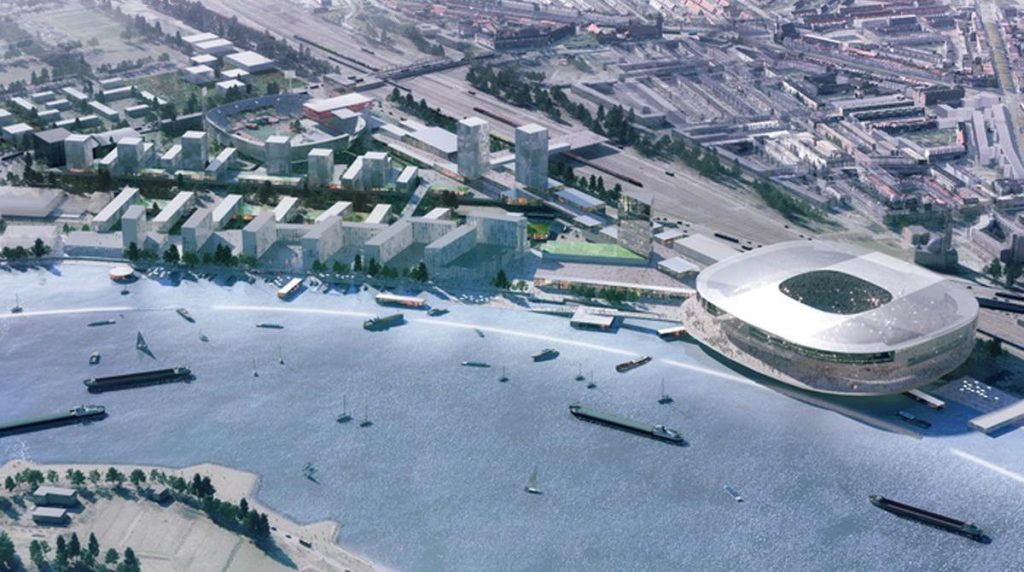Feyenoord Football Club’s new waterfront stadium has been designed to revitalise the city of Rotterdam, according to one of the leading architects behind the project.
Managing Partner-Architect for International Studio Office of Metropolitan Architecture (OMA), David Gianotten, explained how the company’s design for the stadium reflects the fact that sport is a key part of the urban fabric and society of the city.
He said: “There were two previous attempts to build a new stadium for Feyenoord and they both failed.
“Our analysis was that they failed because it was an object driven assignment – it was purely about building a new stadium or rebuilding the old one.”
He said that the new Feyenoord stadium should not just be seen as an object, rather it should be seen as part of the city and a chance to revitalise a part of the city that is in need of it.
Gianotten said that despite the regeneration it is “not being the first thing football boards and directors are concerned about” and that the club eventually agreed to OMA’s proposal and commissioned them to design a stadium complex for the city’s Veranda district.
The result of the consultation is a project that will feature a hose of public leisure, housing, social and healthcare facilities situated within the old De Kuip stadium, which will be fully redeveloped.
The existing facilities will also be used to host community athletics programmes.
The regeneration will be completed by the creation of top flight Dutch club Feyenoord’s new landmark stadium.
Gianotten added: “We proposed building the new stadium on the waterfront as a starting point of a development of that area. Rotterdam has ignored the River Maas for a very long time; it has developed with its back to it.”
Infrastructure expert Operatie NL and financial advisors First Dutch are also collaborating on the scheme.


